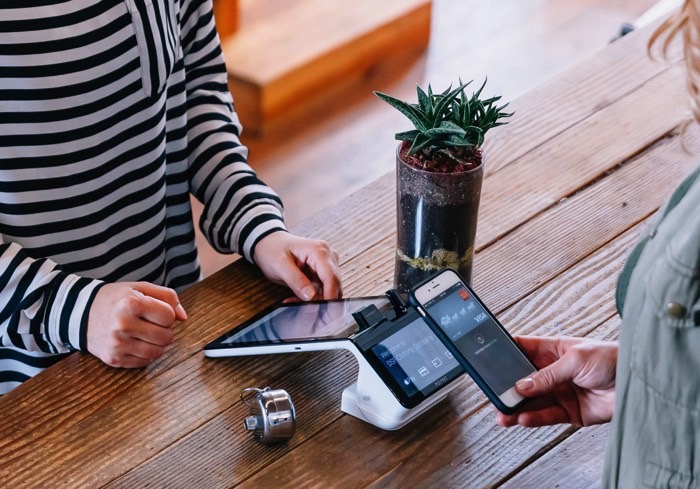
Apple’s week started off in a celebratory manner, as the payments and commerce ecosystem spent much of Tuesday marking the one-year anniversary of Apple Pay. PYMNTS got so excited that we even threw a party — and invited 13 of the smartest and sharpest in the industry to give their progress reports on the payments platform and share the predictions for what’s next.
And while most of the comments on Apple Pay’s first year were positive (if cautious about the slow adoption so far), Apple didn’t have much in the way of time to sit back and enjoy the accolades since it has Year 2 to get started on.
Year 2 will bring with it far more competition than the rather quiet race it spent the year running with Google Wallet/Android Pay. Samsung Pay has recently gone live in the U.S., LG is getting in on the payments act, and, as we learned this week, so is Sony.
And the competition is coming from lots of different places as commerce moves to the cloud. The SAP/Samsung Pay announcement introduces a whole new layer of mobile commerce into the mix – and a whole new set of competitors.
Speaking of which …
It seems even CurrentC will be making its long-awaited appearance on the scene in the near future, meaning the merchant-supported challenger the payments press has been long promoting could finally arrive anytime now.
Of course that challenge is seemingly getting pretty big, since new data out this week indicates that Apple is running the table when it comes to mobile payments.
As it turns out, both the CurrentC threat and the Apple dominance data both deserve something of a closer look — which, lucky for you, we are here to give with this week’s edition of the Apple Pay Tracker.
The payments ecosystem has been speculating about how well CurrentC (the MCX-created “merchant-developed” mobile wallet) would compete against Apple Pay.
And after a whole year of speculation, there’s not much in the way of answers, because, as of yet, CurrentC hasn’t launched and Apple has not had an opportunity to compete with it for the hearts and minds of the nation’s consumers.
In the competition for the hearts of minds of merchants, however, Apple did score some high-profile wins, as founding MCX members Target, Best Buy and Rite Aid completed respective defections over the summer. There was also a CEO switch in there and announcements that the platform was definitely, for real, launching soon. But then there was a whole lot more of nothing from the end of the summer through the first half of fall.
But CurrentC determinedly is marching on — and will soon be the hands of at least some consumers, albeit a geographically restricted group of them.
The City of Columbus is currently piloting the CurrentC mobile app in a final attempt to iron out bugs in the system. Participating retailers include Wendy’s, Target, CVS, Sears, Kmart and Walmart, as well as an anticipated expansion for Shell and Exxon/Mobil stations in the central Ohio area.
All in, 40 merchants with 70 brands will be part of the network when it rolls out nationally. Currently, the system is based on QR code technology scanned on a cashier’s screen or by having a cashier scan a QR code from the smartphone’s screen.
“We’re focused heavily on getting them live and getting it right,” Jessica Deckinger, chief marketing officer at MCX, told The Columbus Dispatch. “Then, we’ll focus on adding merchants. First, we’d love to have consumers help test the app — that’s why we’re in Columbus. It’s a great test market, and there are lots of people who are tech-savvy.”
When the CurrentC mobile app will make the final jump from those tech-savvy Ohioans to the general public remains a mystery.
As the laudatory comments about Apple Pay rolled in Tuesday, a new round of Apple Pay figures showed up to show that payments by Apple have turned in a very solid Year 1 performance.
According to data from the 2015 North America Consumer Digital Payments Survey, Apple Pay is used in 68 percent of all in-store mobile payments in the United States. The survey further showed that North Americans (U.S. residents and Canadians specifically) are 10 percent more aware of mobile payments than they were a year ago, with mobile awareness crossing over into majority territory for the first time at 52 percent.
Two observations.
First, 68 percent is an interesting number. Interesting because mobile payments in the physical store is a relatively new phenomenon with, until recently, not a lot of competition for Apple Pay aside from Starbucks. Given that, one might have suspected that the number should be higher? Which bring us to our second observation: Sixty-eight percent of a small number is still a small number.
And there remains 75 percent of consumers expressing little or no interest in making payments via a smart or connected device, so, Cupertino, we still have a problem. At this point, only 18 percent of consumers say they use mobile payments even once a week – and we bet we know where that is (Starbucks!).
“Though it’s clear that consumers are aware that they can make payments through their phones, continued use of existing payment methods and slow retail adoption of modern card readers have caused usage levels to remain stagnant over the last year,” said Robert Flynn, managing director for Accenture Payment Services in North America.
Or more to the point, the problem is that we haven’t solved one for consumers yet, and until we do, uptake will continue to lag.
Which, it seems, in Apple’s birthday week, ended up being the ultimate conclusion anyway: good first effort, but a long way to go before market adoption.
But there remains some goods news for Apple: The way is equally long (if not much, much longer) for everyone else.